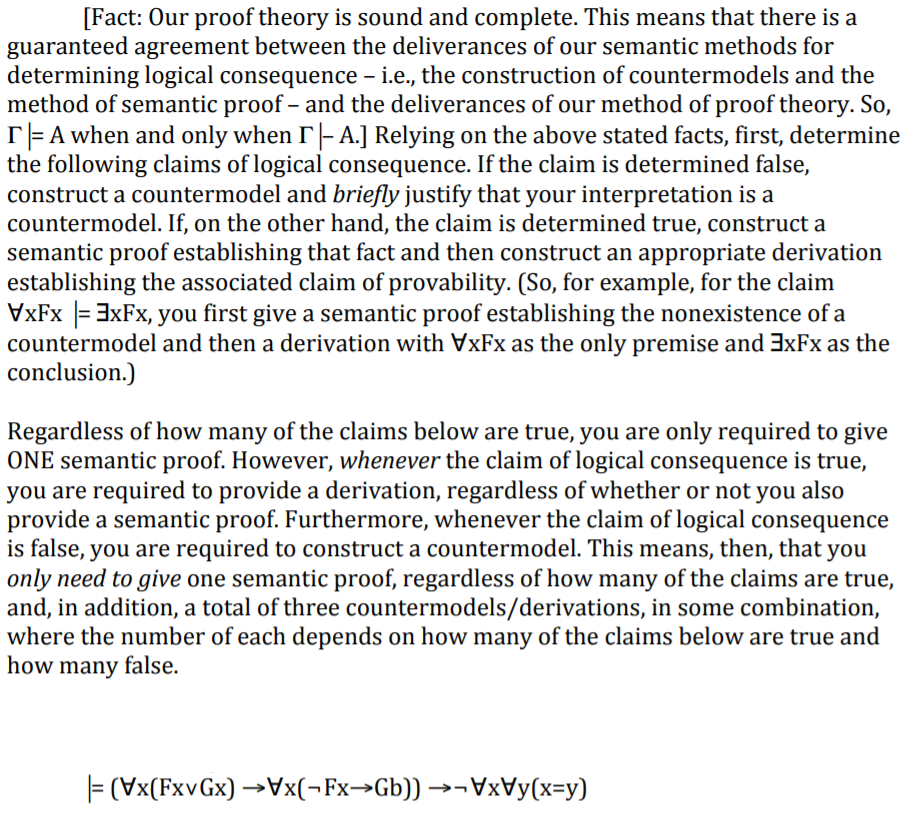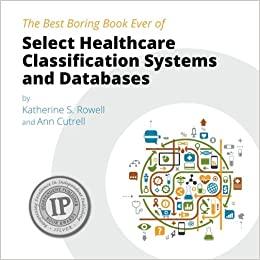
[Fact: Our proof theory is sound and complete. This means that there is a guaranteed agreement between the deliverances of our semantic methods for determining logical consequence - i.e., the construction of countermodels and the method of semantic proof - and the deliverances of our method of proof theory. So, -A when and only when AJ Relying on the above stated facts, first, determine the following claims of logical consequence. If the claim is determined false, construct a countermodel and briefly justify that your interpretation is a countermodel. If, on the other hand, the claim is determined true, construct a semantic proof establishing that fact and then construct an appropriate derivation establishing the associated claim of provability. (So, for example, for the claim VxFx -3xFx, you first give a semantic proof establishing the nonexistence of a countermodel and then a derivation with VxFx as the only premise and 3xFx as the conclusion.) Regardless of how many of the claims below are true, you are only required to give ONE semantic proof. However, whenever the claim of logical consequence is true, you are required to provide a derivation, regardless of whether or not you also provide a semantic proof. Furthermore, whenever the claim of logical consequence is false, you are required to construct a countermodel. This means, then, that you only need to give one semantic proof, regardless of how many of the claims are true, and, in addition, a total of three countermodels/derivations, in some combination, where the number of each depends on how many of the claims below are true and how many false. [Fact: Our proof theory is sound and complete. This means that there is a guaranteed agreement between the deliverances of our semantic methods for determining logical consequence - i.e., the construction of countermodels and the method of semantic proof - and the deliverances of our method of proof theory. So, -A when and only when AJ Relying on the above stated facts, first, determine the following claims of logical consequence. If the claim is determined false, construct a countermodel and briefly justify that your interpretation is a countermodel. If, on the other hand, the claim is determined true, construct a semantic proof establishing that fact and then construct an appropriate derivation establishing the associated claim of provability. (So, for example, for the claim VxFx -3xFx, you first give a semantic proof establishing the nonexistence of a countermodel and then a derivation with VxFx as the only premise and 3xFx as the conclusion.) Regardless of how many of the claims below are true, you are only required to give ONE semantic proof. However, whenever the claim of logical consequence is true, you are required to provide a derivation, regardless of whether or not you also provide a semantic proof. Furthermore, whenever the claim of logical consequence is false, you are required to construct a countermodel. This means, then, that you only need to give one semantic proof, regardless of how many of the claims are true, and, in addition, a total of three countermodels/derivations, in some combination, where the number of each depends on how many of the claims below are true and how many false







